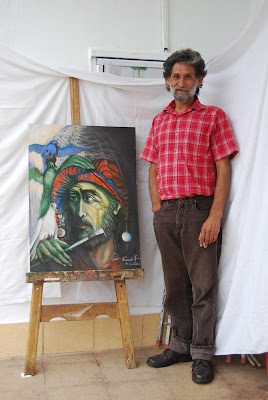Part 2
Angelika Biro, Photographer
The Legend of The Sun and The Moon Once upon a time there was no Sun and there was no Moon. They were chained at the other end of the world among dragons and giants who would not let the Sun and the Moon go free.
There lived two men. In these two men there was huge strength, they were
said to be the bravest and strongest people on earth - not afraid of anything.
They were the only ones to know where the Sun and the Moon were kept hidden,
in chains, and they wanted to free them.
They journeyed for a full six months, through the land of
dragons and the land of giants until they reached the Sun and the Moon.
They fought the wild dragons and the terrible giants and beat them.
Then one of the men said:
I will carry the Sun!
And the other man said:
And I will carry the Moon!
The Sun and the Moon agreed to go with them and the men released them from their chains. They started their journey back from the other end of the world through the land of the dragons, through the land of the giants.
On the return journey the Sun heated up as fire, so the man carrying it was burnt dark.
That is why the gypsies are dark skinned, because they are the descendants of this man. While the descendants of the other man, who carried the Moon remained white....
(collected and translated by Károly Bari from Romanes to Hungarian and from Hungarian to English by Szasz Zsuzsi)

Bodvalenke Fresco Village: The Legend of the Sun and Moon

Ana and Zsolti, Petofi Settlement, Sajokaza

Baby with Pink Shoes, Sajokaza

Ali and Krisztina, Sajokaza Village

Roma cave Dwellers, NE Hungary

Edi Neni, Petofi settlement, Sajokaza

Edit and Sandi, Solyom Settlement, Sajokaza

Jeno Zsigo, President of the Roma Parliament
Budapest






























































